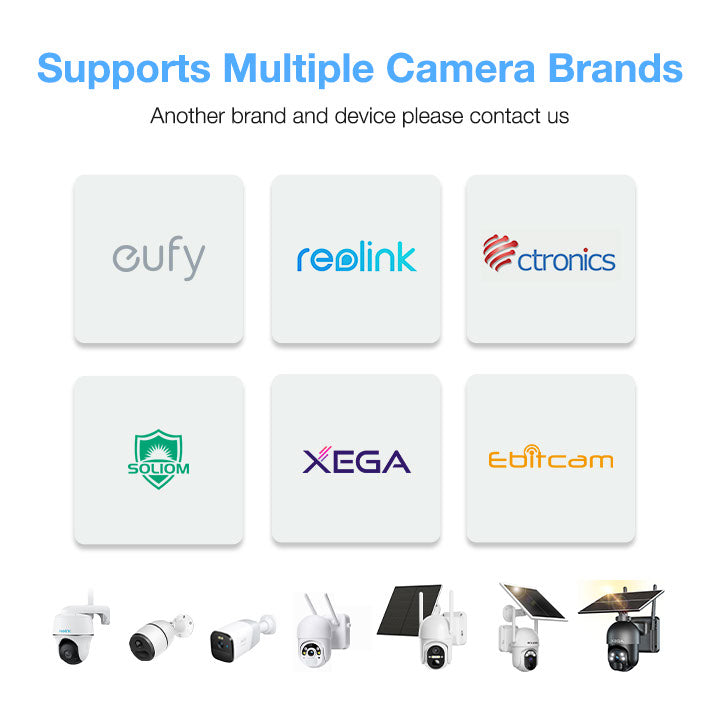Unlocking the Secrets: What You Need to Know About 4G SIM Cards for Security Cameras!
In today's fast-paced world, the need for reliable and efficient surveillance systems has never been greater. Enter the 4G SIM card, a game-changer in the realm of security cameras. As technology evolves, the demand for seamless connectivity in surveillance has surged, making 4G technology a vital component of modern security solutions. Unlike traditional wired systems, 4G SIM cards enable security cameras to transmit data wirelessly, ensuring that you can monitor your property from anywhere, at any time. The advantages of using 4G technology extend beyond just convenience; they also offer enhanced reliability and speed, crucial for real-time monitoring and alerts. So, what exactly do you need to know about 4G SIM cards and their role in securing your space? Let's dive in!

Understanding 4G SIM Cards
A 4G SIM card is a type of Subscriber Identity Module designed specifically for 4G LTE networks, which offer significantly faster data transmission speeds compared to traditional 2G or 3G SIM cards. The fundamental difference lies in the technology: 4G allows for greater bandwidth and lower latency, which is essential for high-quality video streaming and real-time data transfer. Essentially, a 4G SIM card acts as a bridge between your security camera and the internet, enabling mobile data connectivity. This is particularly beneficial for users who require remote access to their security feeds without being tethered to a physical location. Moreover, many modern security cameras are equipped with features that can only be fully utilized when connected to a 4G network, making these SIM cards indispensable for effective surveillance.
Key Features of 4G SIM Cards for Security Cameras
When choosing a 4G SIM card for your security camera, there are several key features to consider. Firstly, data speed is of utmost importance; the faster the data transfer, the clearer the video feed will be. Look for SIM cards that offer high-speed data plans that can accommodate the bandwidth required for HD video streaming. Coverage is another critical factor—ensure that the SIM card provider has robust coverage in your area to avoid connectivity issues. Reliability also plays a vital role; you want a SIM card that can maintain a stable connection, especially during peak usage times. Additionally, certain 4G SIM cards come with features like automatic failover, which can switch to a backup network if the primary one fails, ensuring uninterrupted surveillance. These features collectively enhance the overall performance of your security camera system.
Installation and Configuration Requirements
Installing and configuring a 4G SIM card in your security camera is a straightforward process, but it requires some attention to detail. Begin by ensuring that your security camera is compatible with 4G networks. Once verified, gather the necessary tools, which typically include a screwdriver and possibly a SIM card ejector tool. Open the camera's SIM card slot—this is often found on the side or bottom of the device. Insert the 4G SIM card carefully, ensuring it is oriented correctly. After the card is in place, power on the camera and follow the manufacturer's instructions for configuration, which usually involves connecting the camera to your Wi-Fi network or mobile app. Troubleshooting tips include checking for proper SIM card insertion, ensuring your data plan is activated, and confirming that the camera's firmware is up to date. Remember, a well-configured device is key to achieving optimal performance.
Benefits of Using 4G SIM Cards in Security Cameras
The benefits of using 4G SIM cards in security cameras are numerous and impactful. One of the primary advantages is the ability to access your security feeds remotely. This means whether you’re at work, on vacation, or simply away from home, you can monitor your property in real-time from your smartphone or tablet. Additionally, many 4G-enabled cameras come equipped with motion detection and alert systems that send notifications directly to your device whenever unusual activity is detected. This proactive feature enhances security, allowing you to respond promptly to potential threats. Enhanced security features, such as cloud storage integration, also come into play, enabling you to store and access recorded footage conveniently. All these benefits work together to create a more secure and responsive surveillance system that meets the demands of modern life.
Common Challenges and Considerations
While 4G SIM cards offer significant advantages for security cameras, there are common challenges and considerations to keep in mind. One of the primary concerns is data costs; depending on your plan, streaming high-definition video can quickly consume your data allowance, resulting in additional charges. It's important to choose a data plan that aligns with your usage needs. Connectivity issues can also arise, especially in areas with weak signal strength or during network congestion. Regularly monitoring your camera's connection status and having a backup plan in place can help mitigate these challenges. Lastly, consider the security of your 4G connection; utilizing strong passwords and regularly updating your device's software can enhance the overall security of your surveillance system.
Maximizing Security with 4G SIM Cards
In summary, 4G SIM cards play a crucial role in the functionality and effectiveness of modern security cameras. They provide the connectivity needed for real-time monitoring, remote access, and enhanced security features that traditional systems lack. By understanding the key features, installation requirements, and potential challenges associated with 4G SIM cards, you can make informed decisions that best suit your surveillance needs. As technology continues to evolve, investing in robust security solutions will not only protect your property but also provide peace of mind. So, whether you're considering upgrading your current system or installing a new one, the importance of choosing the right 4G SIM card cannot be overstated.








